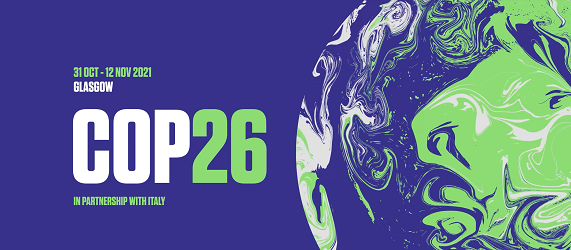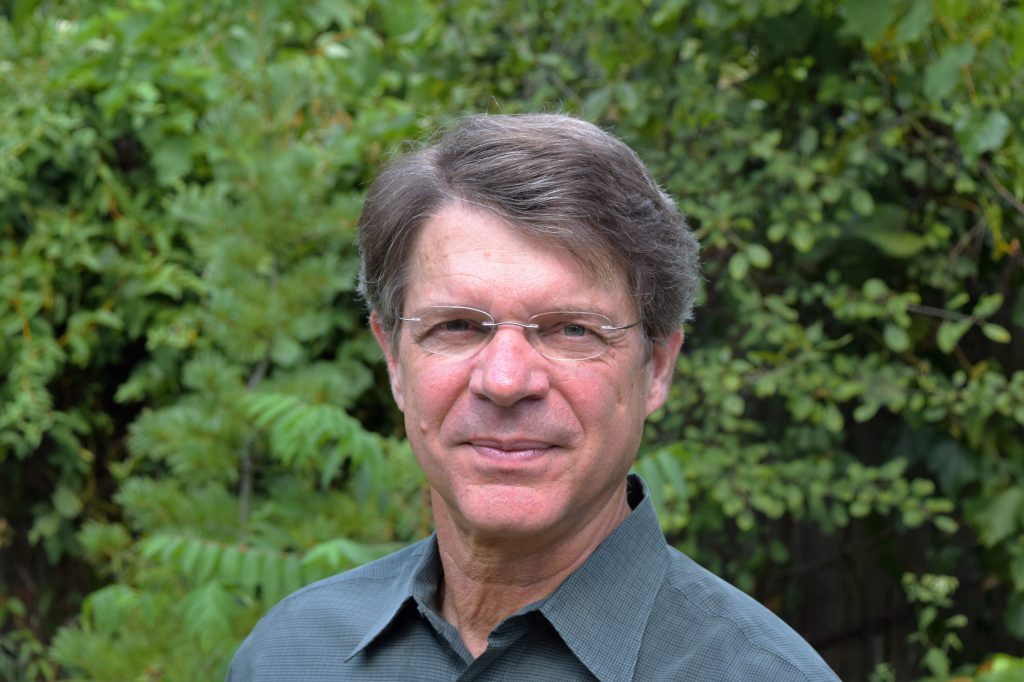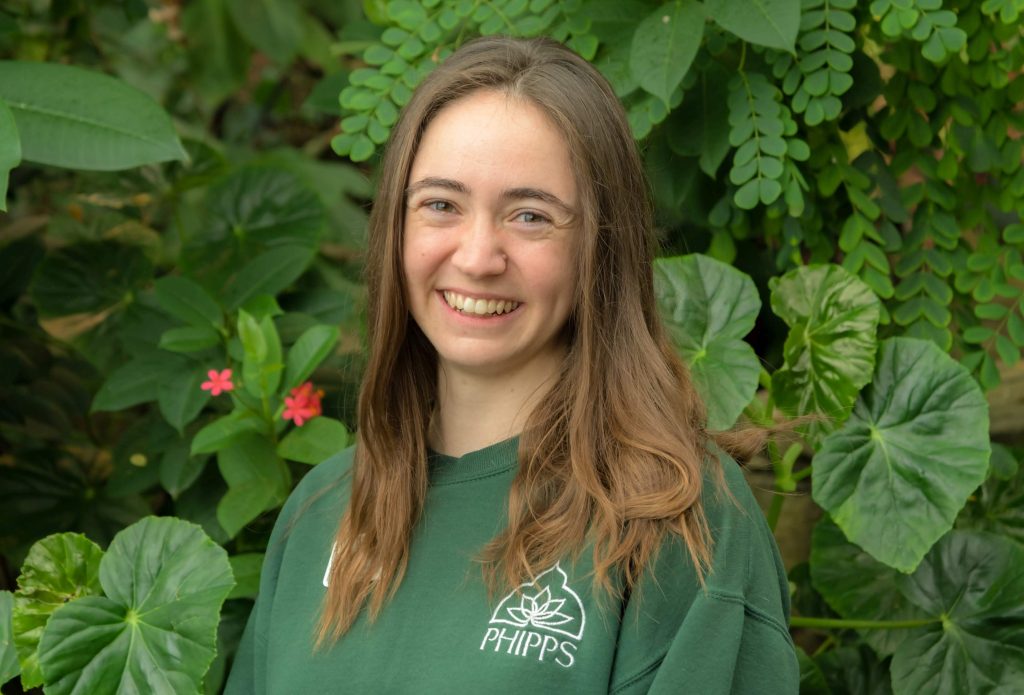Phipps at COP26: Observations and Opportunities

Phipps sent three staff members to COP26 with Observer status in the Blue Zone: President and CEO Richard Piacentini, Director of Research and Science Education Dr. Sarah States, and Research and Science Education Coordinator Jennifer Torrance. Our goal was to make new connections with like-minded organizations and to find opportunities for institutions like gardens, zoos, and museums to lead efforts to address climate change in the communities they serve.
A general overview of the results of COP26 can be found here. The following are recaps from each of Phipps’ three attending staff members, each with a unique focus area.
Richard Piacentini, President and CEO

Focus Area: Cultural Organizations Addressing Climate Change
To walk through all of the pavilion displays at COP26 from all of the countries describing what they are doing to address climate change, one would believe that the problem had already been solved, but as Greta Thunberg would say, this is a lot of “blah, blah, blah,” and the final commitments at the of the conference were less than we need to stay below 1.5 degrees Celsius and avoid the catastrophic effects predicted by breaking that target. However, there were some positive developments.
At the conference, President Biden pledged that the U.S. would cut our greenhouse gas pollution in half from 2005 levels by 2030 and be Net-Zero by 2050. This is a call to action: no matter what the purpose or mission of your garden or museum is, every person, organization and business should be working to cut their emissions in half by 2030 to support this goal. This is our challenge and opportunity. In an upcoming webinar for The Climate Toolkit we will go over how to calculate your target emissions number for 2030. We encourage you to join the Toolkit so that you can learn about strategies that other institutions have applied that may help you reach your target too.
The museum sector (which includes public gardens) is presently not a major player at COP, nor is it seen as being very important. The government and other NGO leaders that I spoke to at COP were surprised to think of museums as potential partners in addressing climate change. When the “We Are Still In” was launched after President Trump announced that the U.S. would withdraw from the Paris Climate Agreement, it was focused on businesses and cities. There was no accommodation for museums to join — I know because we tried. Museums can join now, the project has been renamed America Is All In, and I strongly encourage you to sign up. Museums are some of the most trusted organizations in their communities, and collectively we reach hundreds of millions of visitors a year. We should be major players in addressing climate change. But if we want to be at the table, we must raise our profiles. While at COP26, I had the opportunity to speak on a panel as part of America Is All In called Culture Over Carbon, and I also spoke at the U.S. Climate Action Center on Leading by Example, Collections Based Cultural Organizations Addressing Climate Change.
There were major daily themes and agenda items for presentations, including: Finance, Energy, Youth and Public Empowerment, Nature, Adaptation Loss and Damage, Gender, Transport, Cities, Regions and Built Environment and Indigenous People. Many of these sessions were recorded. A google search on YouTube will connect you with them. Following are additional links to some of the better talks and resources related to the museum sector that I observed during the conference:
- Secretary of the Interior Deb Haaland spoke as part of a panel at the U.S. Center on Saving Nature to Save Ourselves. Her talk starts at 11:35. I spoke with her Chief of Staff, Rachael Taylor, afterwards and expressed how public gardens could assist her in her efforts to conserve biodiversity.
- U.S. Senator Markey and Climate Advocates from the Sierra Club, WWF, and NRDC Discuss Build Back Better
- During a small breakout session, National Climate Advisor Gina McCarthy answered questions related to Climate Change and cultural organizations.
- Earthday.org held a number of sessions on a wide variety of subjects.
- At a side event at COP26, Botanic Gardens Conservation International (BGCI) launched The Global Biodiversity Standard which seeks to address the challenges of tree planting programs.
- Richard Deverell, director of the Royal Botanic Gardens, Kew — the only other garden represented in the Blue Zone — spoke on How Botanic Gardens Can Save the World.
- I found the discussion Futures Lab: Transformational Economics Meets Transformational Leadership, led by the Club of Rome, to align with regenerative thinking, which is the paradigm we use in our planning and operations management at Phipps.
- Other highlights from the Conference were speeches by President Obama and David Attenborough and remarks by John Kerry, Gina McCarthy, and Ali Zaidi at COP26
Sarah States, Director of Research and Science Education

Focus Area: Science and Climate Communication
During her time at COP26, Sarah connected with other educators and tracked negotiations on Action for Climate Empowerment (ACE), the UN program that centers education, outreach and training on climate change issues. ACE works to implement the original goals of Article 6 the Paris Agreement, in which parties agreed that the public should be involved in developing responses to climate change. Despite little funding and low cooperation by nations to implement the ACE program, there is a strong and vocal network of non-party stakeholders advocating for ACE initiatives, including in the U.S. The U.S. ACE Coalition, of which Phipps is a member, is a multidisciplinary network of individuals and organizations committed to implementing ACE initiatives across all sectors of society.
Below are a few informative links that help characterize the COP experience.
- IAAI Youth Climate Action Innovation (International Association for the Advancement of Innovative Approaches to Global Challenges) held a short press conference featuring young people involved with ACE and YOUNGO, the official youth constituency of the UNFCCC. The panel discusses several issues relevant to youth involvement in the UNFCCC and some larger issues at COP26, such as skills young people need to be more involved in climate negotiations, key climate issues important to young people, and how to truly involve youth rather than just engaging in tokenism.
- Despite what you heard on the news, COP26 was not just doom and gloom – it was also a showcase for the many nature-based solutions taking place. One featured example was Justdiggit, an organization working to re-green parts of Africa through rainwater harvesting and tree restoration. Their presentation highlighted their hard work, but also demonstrated how storytelling is essential to address climate change.
- The U.S. Climate Action Center featured many talks about U.S. social and environmental issues relating to climate change. Phipps hosted a talk called Communicating with Your Stakeholders About Climate Change to highlight key research and best practices on climate change education and engagement.
Jennifer Torrance, Research and Science Education Coordinator

Focus Area: Youth Engagement and Empowerment
During her time at COP26, Jennifer joined YOUNGO, the Youth Constituency of the UNFCCC, as part of their ACE (Action for Climate Empowerment) working group. This group advocates for youth and public empowerment, human rights and climate education, among other causes. Jennifer helped to draft and edit statements such as the YOUNGO closing statement (seen at 3:31:32 in the COP26 Closing Plenary), contact delegations about supporting human rights language (see the Closing Plenary of the SBI, a COP subsidiary dedicated to implementation and assessment, for the nations’ human rights language statements), find media for and assist with other aspects of press conferences and aid the group in various other projects and actions during this COP.
Jennifer also attended many talks and panels about youth involvement, human health, most affected nations, public empowerment and ecology, including these impactful sessions:
- Presidency Event in Partnership with YOUNGO: Unifying for Change: The Global Youth Voice at COP26
- The UN Youth Advisory Group and Post-COP26 Youth-Led Climate Action
- Futures Lab: Climate-Smart Healthcare for a Healthier Planet (The first third of this session is a very powerful story about air pollution)
- Adaptation & Resilience Day, 3rd Capacity-Building Hub at COP26: (jump to 5:29 for a particularly impactful session)






Bravo Richard and team!
Excellent work, Richard, Sarah and Jennifer: 🙂
One Health thinking and collaborations are incredibly important to address climate change around the world. The One Health Commission virtually attended the COP26 side event, the Global Conference on Health and Climate Change. See https://conta.cc/3pGtO8t ‘No-one’ was thinking or mentioning anything but human health, which is of course exceedingly important as we consider populations that will be forced to migrate as their homes become no longer habitable with rising sea level, floods, hurricanes, droughts and fires. Notably, this is the ‘first’ year that WHO has hosted a Health Pavilion at COP. Thank goodness we are finally talking about Health and Climate Change.
But we ‘cannot’ continue thinking ‘only’ about human health. Ecosystem and animal health and biodiversity are huge parts of the climate change equation. By considering then in our thoughts and planning, by protecting those arenas, we do also protect human health. One Health is a win:win:win:win.